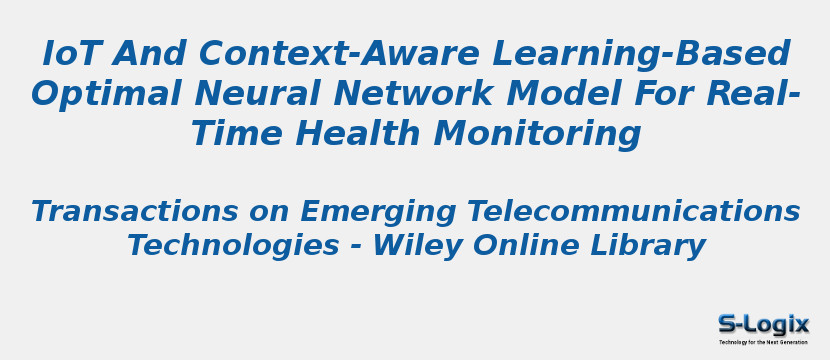Research Area: Internet of Things
Recently, numerous context-aware approaches are established to provide physiological information regarding the wellness and healthcare of each individual. While monitoring the health condition of the patient there occur delays in transferring data to the cloud. So to overcome such types of delays, numerous IoT sensors are developed to monitor, track, and sense the activities of the elder persons. This paper proposes four-module architecture comprises of IoT module (IoT-M), data pre-processing module (DP-M), context-aware module (CA-M) as well as decision-making module (DM-M) for storing and processing numerous cumulative sensor data. Here, an IoT comprises a concrete or substantial hardware ecological unit, that is, sensors and actuators. On the other hand, the context-aware computational approach comprises of insubstantial software ecological unit in understanding and processing the context directly into an accomplishment through various IoT devices. The initial module or the IoT-M comprises of sensors whereas in the DP-M phase includes data collection phase, data storage phase, and data redundancy phase. The third phase or the CA-M comprises two different types of layers namely fog layer, cloud layer. In addition to this, a context-aware learning phase is also enumerated. In the final phase or the DM-P phase, the feature extraction and classification is done by Back-Propagation Neural Network along with the Adaptive grasshopper optimization algorithm so as to obtain a best optimal solution. Thus, an alarm or a notification is sent to the medical practitioner regarding the health condition of the patient with very less response time, high accuracy, and a high scalability rate. The evaluation results and discussions are made by comparing our proposed approach with several other approaches and the evaluation results reveal that the proposed framework provides better results with high accuracy, scalability, network latency, and low response time.
Keywords:
Author(s) Name: D. Kavitha,S. Ravikumar
Journal name: Transactions on Emerging Telecommunications Technologies
Conferrence name:
Publisher name: Wiley
DOI: 10.1002/ett.4132
Volume Information: Volume 32, Issue 1
